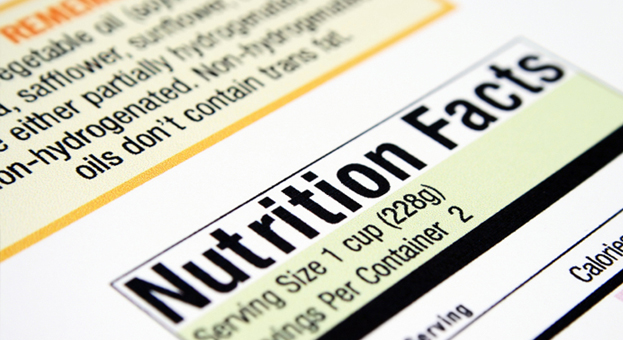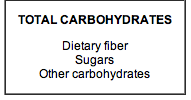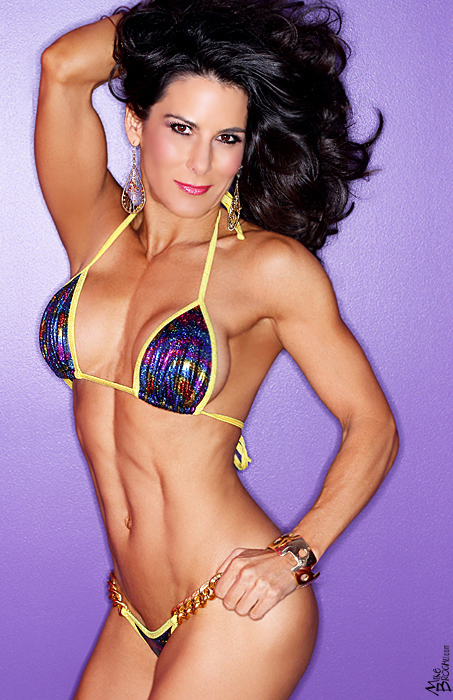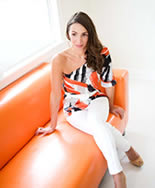
Let me begin this by saying that I have absolutely no problem with Barbie. I played with tons of Barbies as a child and my self esteem didn’t suffer because I lacked ridiculously long blond hair and ginormous boobs. The main thing I remember about Barbie was that she frequently got it on with Ken during the summer of 83′ in my best friend’s Barbie house. She was quite the minx.
I recently read that Architect Barbie will be released for public consumption in early August. I got a little chuckle out of that because I personally can never tell the difference in Barbie dolls. They all look the same to me AND they all end up the same way in my house – naked with hacked off hair. What surprised me were the facts about this doll and the whole Barbie phenomenon. I didn’t know Barbie was taken so seriously. Here is a little history on Barbie and what went into the creation of the new Architect Barbie. It will surprise you.
When Barbie was first introduced in 1959, she was considered a rebel. She was unmarried, had no children, had her own career and beach house and lived a glamorous life very different from that imagined for women in mainstream postwar culture.
Eleven-and- half inches tall in her trendy ankle boots and carrying a hard hat and pink drawing tube, the doll channels “Barbie’s rebellious side,” according to a University at Buffalo architecture professor who helped bring her to the public stage. And Barbie is already generating talk among practicing architects about the role of women in the field.
Architect Barbie is the 127th doll in Mattel’s “Barbie I Can Be…” series. Mattel was looking to highlight careers where women are underrepresented and “architect” seemed to be the right fit for the 2011 “I Can Be” doll line which encourages young girls to follow their dreams – career-wise.
The two architects who lobbied for Architect Barbie took a hands-on, detail-oriented approach to advising Mattel on Barbie’s overall look. The pair sent over a list of about 25 accessories that an architect would tote around with her, and even sent pictures from an editorial spread that Vogue did last summer which featured clothing with architectural shapes and monochromatic colors.
The result: Architecture Barbie wears an A-line strapless dress that features a cityscape print; she carries a document tube, a white hard hat and a pair of black-rimmed glasses. The designers decided it was important for Barbie to be professional and feminine at the same time. And showing that Barbie has some creativity was important to the women.
After learning all of the details that went into this one doll I now have a new respect for toy designers. But I don’t think the black rimmed glasses will lessen the cat calls from horny Kens at the construction site. Just sayin’.
Written by
Lea Barlow
•
2 Comments

Nutrition Facts, thank goodness, are on practically everything in the store nowadays. Today, in Part 2 of the Shop Smarter series, each line of the label is broken down for you. Once you learn how to read the information on the package and, more importantly, interpret it, you can make better and more informed choices about what you are purchasing and feeding your family.

This line reflects the amount that the average person eats at one helping. Serving size is expressed in kitchen terms – cups, spoons, slices, and also in grams. Serving size is set by the F.D.A., not by the manufacturer, for all similar products (e.g., all yogurts) so you can make comparisons without having to do a lot of math. But be aware that your average serving may be more or less than this amount.
 The next line tells you how many servings the package contains, enabling you to compare similar products on the basis of cost per serving. Multiply this number by the serving size and it should equal, or come close to, the total volume of the package.
The next line tells you how many servings the package contains, enabling you to compare similar products on the basis of cost per serving. Multiply this number by the serving size and it should equal, or come close to, the total volume of the package.
 This line tells you the number of calories per serving. Remember to adjust this (and other nutrient amounts, too) if your idea of a serving size is different from that stated on the package. If a half-cup serving has 50 calories, but you usually eat a one-cup serving, you’ll be getting 100 calories. When shopping, compare the nutrient values to the total calories of the same size serving of each food. For example, a cereal that contains four grams of protein in a 100 calorie serving would be more nutritious than a cereal listing two grams per 100 calories. Also, a food listing four grams of protein in 100 calories would be less nutrient-dense than one listing three grams of protein in a 50 calorie serving of the same volume.
This line tells you the number of calories per serving. Remember to adjust this (and other nutrient amounts, too) if your idea of a serving size is different from that stated on the package. If a half-cup serving has 50 calories, but you usually eat a one-cup serving, you’ll be getting 100 calories. When shopping, compare the nutrient values to the total calories of the same size serving of each food. For example, a cereal that contains four grams of protein in a 100 calorie serving would be more nutritious than a cereal listing two grams per 100 calories. Also, a food listing four grams of protein in 100 calories would be less nutrient-dense than one listing three grams of protein in a 50 calorie serving of the same volume.
 This line tells you how many calories in each serving are from fat. Use this and the “Total Fat” line below to decide if the food fits your goals for fat consumption. If this food gets a lot of its calories from fat, you’ll want to eat it sparingly or not at all.
This line tells you how many calories in each serving are from fat. Use this and the “Total Fat” line below to decide if the food fits your goals for fat consumption. If this food gets a lot of its calories from fat, you’ll want to eat it sparingly or not at all.
 This section tells you what percentage of the total recommended daily amount of each nutrient (fats, carbs, proteins, major vitamins, and minerals) is in each serving, based on a 2,000 calorie per day diet. If you eat more or less than 2,000 calories, adjust this value proportionally. The average woman (non-pregnant and no-lactating) needs about 2,000 calories per day. The average man needs around 2,500 to 2,800. An athlete may burn between 3,000 to 4,000 per day. These daily values are for adults and children four years of age or over. These values cannot be applied to infants or children under four.
This section tells you what percentage of the total recommended daily amount of each nutrient (fats, carbs, proteins, major vitamins, and minerals) is in each serving, based on a 2,000 calorie per day diet. If you eat more or less than 2,000 calories, adjust this value proportionally. The average woman (non-pregnant and no-lactating) needs about 2,000 calories per day. The average man needs around 2,500 to 2,800. An athlete may burn between 3,000 to 4,000 per day. These daily values are for adults and children four years of age or over. These values cannot be applied to infants or children under four.
 This line tells you how many grams of fat is in one serving and what percent this is of the recommended daily value (DV). For example, “Total Fat 1 gram, 2 %” means that one serving would contain one gram of fat and two percent of the total recommended daily intake of fat.
This line tells you how many grams of fat is in one serving and what percent this is of the recommended daily value (DV). For example, “Total Fat 1 gram, 2 %” means that one serving would contain one gram of fat and two percent of the total recommended daily intake of fat.
 This subheading under “Total Fat” tells you how much of the fat in each serving is saturated fat and what percent this is of your daily recommended value (DV). Current nutritional recommendations are that less than one-third of the fat in your diet (less than 8% of your total daily calories) should come from saturated fat.
This subheading under “Total Fat” tells you how much of the fat in each serving is saturated fat and what percent this is of your daily recommended value (DV). Current nutritional recommendations are that less than one-third of the fat in your diet (less than 8% of your total daily calories) should come from saturated fat.
Trans fat When you read a nutrition label remember that companies are allowed to list the amount of trans fat as “0 grams” if it contains less than .5 grams of trans fat per serving. This means that your food can contain some trans fat even if the nutrition label says “0 grams” per serving. Always check the ingredient list for trans fat, which may be listed as “hydrogenated vegetable oil” or “partially hydrogenated vegetable oil.” Trans fat is usually found in commercially prepared baked goods, fried foods, snack foods and margarine.

This line tells you how many milligrams of cholesterol and what percent this is of the recommended daily value.

Total carbohydrate: Tells you how many grams of carbohydrates are in each serving and the percentage of the Daily Value this represents. This number includes starches, complex carbohydrates, dietary fiber, added sugar sweeteners, and non-digestible additives. The following three carbohydrates all add up to the total carbohydrate value.
Dietary fiber: This figure represents the number of grams of fiber in each serving.
Sugars: This figure represents the number of grams of added sweeteners, which may appear in the ingredients list as: sugar, corn syrup, honey, brown sugar, and so on.
Reading between the lines. As a general guide, the greater the discrepancy between “total carbohydrates” and “sugar,” on the label, the more nutritious carbohydrates the food contains. This means that the package contains more of the food’s natural sugars than added sugars. The closer the number of grams of “sugar” is to the “total carbohydrates” in each serving, the closer the food gets to the junk quality.
 This line tells you how many grams of protein are in each serving. You will notice that the percent DV is missing from the protein label because protein insufficiency is not generally thought to be a problem. The average daily protein requirement for most people would be between 50 and 75 grams a day. So, a serving that contains three grams of protein would give you around four to six percent of the DV for protein.
This line tells you how many grams of protein are in each serving. You will notice that the percent DV is missing from the protein label because protein insufficiency is not generally thought to be a problem. The average daily protein requirement for most people would be between 50 and 75 grams a day. So, a serving that contains three grams of protein would give you around four to six percent of the DV for protein.
 This list includes the percentage of the recommended daily allowance for vitamins A and C, calcium, and iron in each serving. The food may provide significant amounts of other vitamins and minerals, which may also be listed, though not required by law.
This list includes the percentage of the recommended daily allowance for vitamins A and C, calcium, and iron in each serving. The food may provide significant amounts of other vitamins and minerals, which may also be listed, though not required by law.
 The ingredients list tells you, usually in fine print, what ingredients the food contains. These are listed in order, starting with the ingredient found in the largest amount, by weight, and progressing to the ingredient present in the smallest amount. The ingredients list may be the most important information on the box to someone with food allergies or to a parent wary of the effect of food colorsor preservatives on a child’s behavior. Here you can find out if a food contains eggs, soy, milk, corn, or whatever you must avoid eating. It’s important, even critical, to know the lingo. Casein, caseinate, lactalbumin, whey or whey solids are all derived from cow’s milk, though their names don’t reveal this. Albumin comes from eggs. Dextrose and glucose may originate in corn. Hydrolyzed vegetable protein starts with soybeans, and some of the products used to thicken or stabilize food texture, such as acacia gum, are legume products.
The ingredients list tells you, usually in fine print, what ingredients the food contains. These are listed in order, starting with the ingredient found in the largest amount, by weight, and progressing to the ingredient present in the smallest amount. The ingredients list may be the most important information on the box to someone with food allergies or to a parent wary of the effect of food colorsor preservatives on a child’s behavior. Here you can find out if a food contains eggs, soy, milk, corn, or whatever you must avoid eating. It’s important, even critical, to know the lingo. Casein, caseinate, lactalbumin, whey or whey solids are all derived from cow’s milk, though their names don’t reveal this. Albumin comes from eggs. Dextrose and glucose may originate in corn. Hydrolyzed vegetable protein starts with soybeans, and some of the products used to thicken or stabilize food texture, such as acacia gum, are legume products.
Pay attention to where and how various kinds of sugar are included on the ingredients list. Use your good sense. Ketchup, for example, should contain mainly tomatoes. Tomatoes, not sugar, should be first on the ingredient list. A cereal in which sugar is the first, second, or third ingredient, would certainly be less nutritious than one in which two or three types of grains are listed before the sugar.
Source: askdrsears.com
Written by
Lea Barlow
•
Leave a comment
 Name: Laura London
Name: Laura London
Kids: Samantha 17, Brian 13 and Kayla 11
Occupation: Health & Wellness Coach, Fitness Model, Personal Trainer, Business Owner , Mother of 3
Hometown: Boca Raton, FL
H&H Interview with Laura:
1. What advice do you have for moms to help them stay motivated with their fitness goals?
My advice would be to have a vision and a plan. Planning is the most important step in reaching your goals. Write down your goals, like a staircase take small steps. When you reach one cross it off and move up the steps to the next one.
Believe that you can achieve your fitness goals and you will. Change your mindset to always be positive, throw out any negative thoughts in your head.
One thing I like to do is hang a calendar on the fridge and cross off everyday that I exercise with a big red marker. This gives you a visual and motivation to keep crossing off those days.
2. What are the top 3 items in your grocery cart?
Oatmeal, Broccoli and Organic Chicken.
3. What is your guilty pleasure when you get a break from the kids?
The Spa is my guilty pleasure. I love to have a facial. When I am done, I am so relaxed it was like taking a mini vacation. It is so important for women to make time for themselves.
4. What would we be surprised to find in your purse?
A pink Kookie Pen, 4 types of gum. I also collect positive fortunes from Fortune Cookies and keep them in my wallet!
5. What is your favorite reality TV show?
My favorite reality TV show would have to be Dancing with the Stars. There are so many reality shows with a negative message. Dancing with the starts is fun, entertaining and makes you smile. The contestants work very hard and inspire the viewers to get up off the couch and dance!
6. What is your go-to ‘Cheat Day’ treat?
I have two favorite Cheat Day treats pizza and chocolate. A girls gotta live…
7. What is the funniest thing your kids have said or done lately?
My kids ask me to flex my muscles for their friends. They like to show off their “buff” mom.
mom.
8. What is your favorite quotation?
There are actually two. The first one is “Motherhood is a Sport”. I love this saying!!! and “Follow your dreams because you never know where they will take you”
9. What songs are top on your iPod playlist right now?
My top five are:
1. Just Can’t Get Enough – Black Eyed Peas
2. On the Floor – Jennifer Lopez & Pitbull
3. Club Can’t Handle Me – Flo Rider
4. Just the Way Your Are – Bruno Mars
5. Don’t Stop Believing – Journey
10. Who is your favorite celebrity mom and why?
My favorite celebrity mom is Jennifer Nicole Lee. She is a shining example of someone who has shed her “fat suit” and transformed her life. She is a mother of two busy boys and also runs a fitness empire that she created with hard work and determination. She leads by example and lives the fitness lifestyle.
11. What is one thing most people don’t know about you?
I used to be very shy and found it hard to hold conversations with people. Fitness has drawn me out of my shell, given me confidence to talk with anyone and I am having so much fun. I am not “shy” anymore, I even make my own YouTube videos for the world to see. Big change!
12. What is your secret to staying Hot & Healthy?
The “biggest” secret I have and to share with Hot and Healthy mom’s is to eat the best quality food you can find. Your body knows what to do with “real food from Mother Nature”. Get rid of the processed food and your body will love you forever!!
*Thanks, Laura!*
Written by
Lea Barlow
•
7 Comments


















